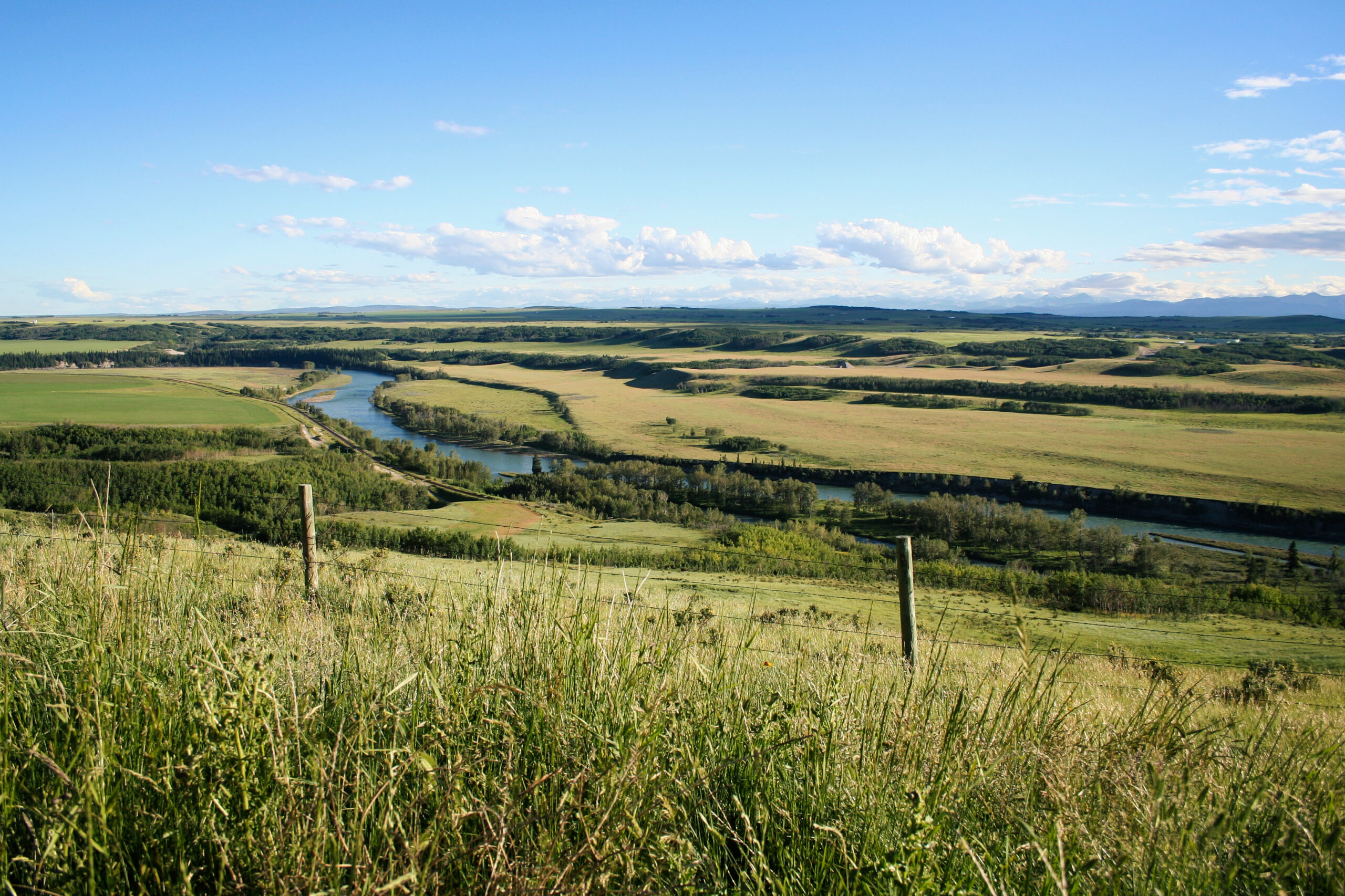AB Direct - Steers
Rail: 492.00-493.50 FOB feedlot (last week)
AB Direct - Heifers
Rail: 492.00-493.50 FOB feedlot (last week)
US Trade- Steers
Rail: 355.00-363.00 (IA, NE) last week
US Trade - Heifers
Rail: 355.00-363.00 (IA, NE) last week
Canadian Dollar
0.19

Water management in Alberta: Consultation and collaboration
For more than a century, irrigation and water management have supported agriculture and the ecology of Alberta’s semi-arid south. However, recurring droughts and minimal snowpack in recent years have strained the system, highlighting vulnerabilities in our water management strategies.
In 2024, Alberta’s Minister of Environment and Protected Areas (EPA), Rebecca Schulz, collaborated with major water users in the South Saskatchewan River Basin to address a severe water shortage. Recognizing the need for long-term solutions, the province has launched a comprehensive water consultation to improve readiness and avoid reactive measures in the future.
The government’s first round of water availability consultations closed on January 24, 2025. This initial phase focuses on gathering ideas, with a more detailed consultation expected later to outline specific proposed changes.
Currently, Alberta allocates 96.2 per cent of its water from surface sources, with agriculture relying heavily on these allocations. Irrigation accounts for 44.3 per cent of provincial water usage, while general agriculture adds another 1.8 per cent. Combined, the agricultural sector is one of the province’s largest water users.
Of particular concern are the Bow and Oldman River basins, which are already over-allocated. These realities are creating anxiety among producers about what changes might mean for agricultural operations, particularly in drought-prone regions.
To ease some of these concerns, Minister Schulz has clarified that:
- First-in-time, first-in-right principles will remain. This ensures senior water license holders retain their priority.
- “Right-sizing” water licenses for agriculture is not under consideration. Producers will not face reductions to existing license volumes because they did not use it fully.
Despite uncertainties, ABP sees this consultation as an opportunity to advocate for stable, sustainable and capacity building water policies. ABP, working alongside the Intensive Livestock Working Group, is advocating for the following measures during consultation:
- Prioritize food security in water decisions. Ensuring that water for agriculture, including irrigation and livestock watering, remains a priority over less critical uses during times of shortage. For example, it’s vital that decisions reflect the importance of food production over services like car washes, which have a less significant societal impact.
- Increase water storage capacity. Producers and governments should develop better water storage solutions. This includes supporting on-farm water storage systems like dugouts and capture basins, as well as investing in reservoirs at a provincial level.
- Enhance knowledge and resources for groundwater. As reliance on groundwater grows, so does the need for better data. Producers currently bear significant risk due to limited information on groundwater availability and quality. Government-supported studies and resources are critical to ensure sustainable use.
- Improve water efficiency. Investing in efficient irrigation systems, upgraded equipment and best practices can reduce water waste. However, financial barriers often deter producers from implementing these changes. Government-backed incentives or support programs could help bridge this gap. Additionally, expanding off-site water development programs will protect natural water bodies while ensuring livestock have reliable access to water.
Agriculture is an undeniable pillar of Alberta’s economy. Irrigation alone contributes $5.4 billion to the provincial GDP and supports 46,000 full-time jobs. These figures highlight the sector’s critical importance and the need for proactive water policies that protect agricultural livelihoods during challenging times.
By collaborating with the government through this consultation process, Alberta’s agricultural community is developing solutions that secure water resources for future generations while enhancing sustainability, ultimately aiming to prevent agricultural water cutoffs during extreme drought conditions.
This article was first published in Volume 5 Issue 1 of ABP Magazine (February 2025). Watch for more digital content from the magazine on ABP Daily.


